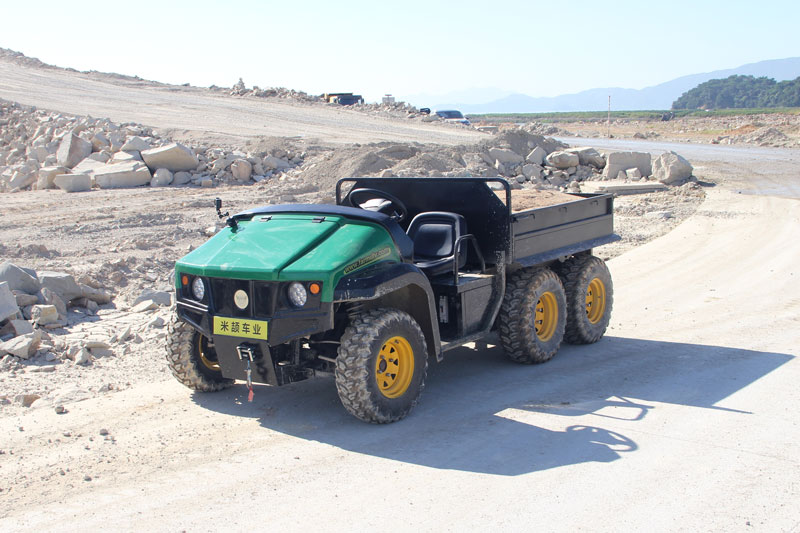In recent years, the world has observed an increasing frequency of natural disasters, from hurricanes to earthquakes. In response, there has been a burgeoning interest in leveraging innovative technologies to enhance disaster response and recovery operations. Among these innovations, six-wheeled electric multifunctional vehicles, or UTVs (Utility Task Vehicles), have emerged as a game-changer. With their robust design and versatile functionality, these electric UTVs offer numerous advantages over traditional vehicles, particularly in challenging terrains and conditions.


Primarily, the electric multifunctional vehicle brings sustainability and efficiency to disaster relief efforts. Unlike gasoline or diesel-powered vehicles, electric UTVs produce zero emissions, significantly minimizing their carbon footprint. This is crucial in maintaining environmental health in already vulnerable areas. Additionally, the electric UTV’s quiet operation can be advantageous in sensitive environments where noise pollution poses an additional stress to affected communities or wildlife.
Among various designs, the six-wheeled electric UTV stands out for its enhanced stability and load capacity. The additional pair of wheels provides superior traction and balance, allowing the vehicle to maneuver across rubble-strewn landscapes and muddy paths, common in disaster-stricken zones. This capability is crucial during initial response efforts, where access to remote areas can mean the difference between life and death. The impressive load capacity enables the transport of substantial quantities of essential supplies such as food, water, and medical kits, as well as the ability to carry injured individuals to safer locations swiftly.
A specific model exemplifying these capabilities is the six-wheeled electric UTV, MIJIE18-E. This vehicle supports a full load of 1000KG and can courageously tackle slopes with an incline of up to 38%. Powered by two 72V5KW AC motors and guided by two Curtis controllers, it achieves a remarkable axle speed ratio of 1:15 and a maximum torque of 78.9NM. The half-floating rear axle configuration ensures a smooth ride even when fully loaded, with braking distances of 9.64m empty or 13.89m when carrying cargo. This model's robust design and adaptability make it ideal for diverse applications in disaster-struck areas, further enhanced by its customization options from the manufacturer, catering to specific needs of rescue missions.
The broad application range and modification potential underline the future of six-wheeled electric UTVs in disaster response. As technology continues to advance, these vehicles can integrate additional features such as advanced GPS navigation systems, remote operation capabilities, and adaptable modules for medical response or debris clearance. As a result, they present an invaluable asset in enhancing the efficiency and effectiveness of disaster relief efforts worldwide.


In conclusion, the advent of the six-wheeled electric UTV marks a pivotal step forward in disaster management. By combining environmental responsibility, robust performance, and versatile applications, these vehicles redefine what is possible in crisis scenarios, offering hope and tangible solutions.
Post time: Oct-07-2024

